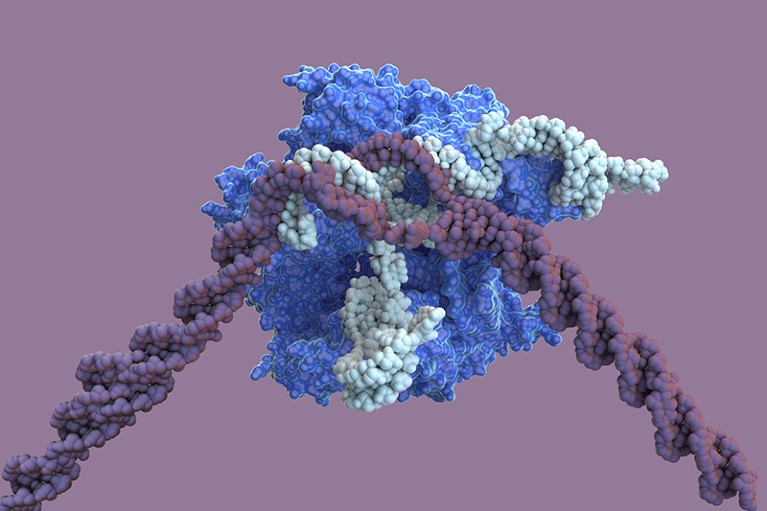- RESEARCH HIGHLIGHT
CRISPR gene editing proves safe in a clinical trial

The CRISPR–Cas9 enzyme complex (blue and grey) edits DNA (purple). Participants in one of the earliest clinical trials of a CRISPR-based therapy experienced no serious side effects. Credit: Ella Maru Studio/Science Photo Library
Access options
Access Nature and 54 other Nature Portfolio journals
Get Nature+, our best-value online-access subscription
$29.99 / 30 days
cancel any time
Subscribe to this journal
Receive 51 print issues and online access
$199.00 per year
only $3.90 per issue
Rent or buy this article
Prices vary by article type
from$1.95
to$39.95
Prices may be subject to local taxes which are calculated during checkout
Nature 578, 195 (2020)
doi: https://doi.org/10.1038/d41586-020-00339-3
